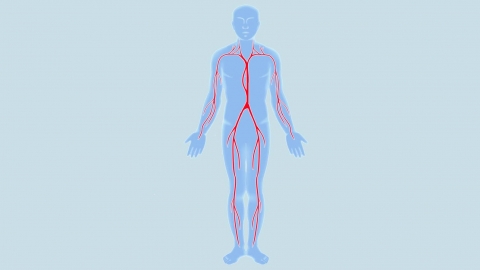What conditions may occur in the late stage of polyneuritis?
In general, in the late stages of multiple neuritis, nerve damage may worsen and lead to complications such as limb paralysis, complete loss of sensory function, skin nutrition disorders, autonomic nervous dysfunction, and respiratory muscle paralysis. A detailed analysis is as follows:
1. Limb Paralysis
In the late stages of multiple neuritis, severe damage to motor nerve fibers prevents normal transmission of motor signals, causing muscles to lose neural control. Patients experience progressively worsening limb weakness, which eventually develops into paralysis. The lower limbs are commonly affected first, followed by the upper limbs, manifesting as an inability to move limbs voluntarily. In severe cases, patients may become wheelchair-dependent or bedridden, significantly affecting basic life functions.

2. Complete Loss of Sensory Function
In the late stages of the disease, sensory nerves are severely damaged, preventing pain, temperature, touch, and other sensory signals from being properly transmitted to the central nervous system. Patients show no response to needle pricks or thermal stimuli and are prone to accidental injuries such as burns or cuts due to an inability to sense external harm. Additionally, they may lose awareness of limb positioning, increasing the risk of falls while walking.
3. Skin Nutrition Disorders
When nerves lose their ability to regulate skin nutrition, the skin becomes deprived of normal nourishment, leading to symptoms such as dryness, flaking, and roughness. Some patients may experience darkening or lightening of skin color, and skin breakdown or ulcers may occur. These ulcers tend to heal poorly and can become infected if left unhealed for long periods, further worsening skin damage.
4. Autonomic Nervous Dysfunction
When autonomic nerves are affected, regulation of internal organs and blood vessels becomes abnormal. Patients may experience orthostatic hypotension, dizziness, and visual darkening upon standing. They may also develop abnormal heart rates and sweating disorders, such as localized anhidrosis or hyperhidrosis. Some patients may have gastrointestinal dysfunction, presenting symptoms such as nausea, vomiting, diarrhea, or constipation.
5. Respiratory Muscle Paralysis
When nerves controlling the respiratory muscles are affected, these muscles can no longer contract and relax normally, leading to weakened or even lost respiratory function. Patients may develop symptoms such as dyspnea, chest tightness, and shortness of breath. Severe cases may require mechanical ventilation to sustain breathing. Without timely intervention, respiratory failure can endanger life.
In addition, advanced multiple neuritis may also be accompanied by muscle atrophy and joint contractures. Daily care for patients should be strengthened, including regular turning to prevent pressure ulcers, keeping warm to avoid colds, and actively cooperating with doctors for treatment to delay disease progression.








